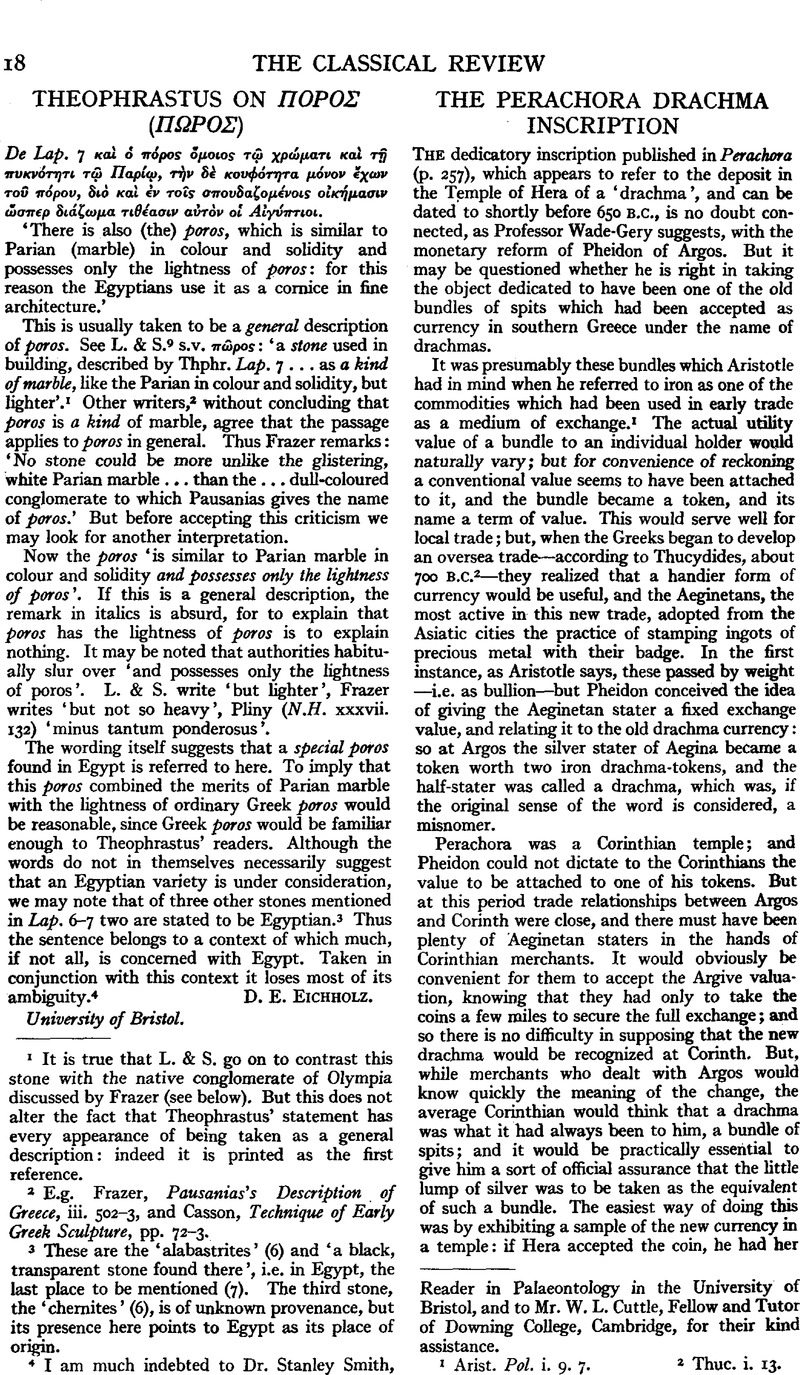Article contents
Theophrastus on ΠοροΣ (ΠΩροΣ)
Published online by Cambridge University Press: 27 October 2009
Abstract

- Type
- Review Article
- Information
- Copyright
- Copyright © The Classical Association 1944
References
1 It is true that L. & S. go on to contrast this stone with the native conglomerate of Olympia discussed by Frazer (see below). But this does not alter the fact that Theophrastus' statement has every appearance of being taken as a general description: indeed it is printed as the first reference.
2 E.g. Frazer, , Pausanias's Description of Greece, iii. 502–503,Google Scholar and Casson, Technique of Early Greek Sculpture, pp. 72–3.
3 These are the ‘alabastrites’ (6) and ‘a black, transparent stone found there’, i.e. in Egypt, the last place to be mentioned (7). The third stone, the ‘chernites’ (6), is of unknown provenance, but its presence here points to Egypt as its place of origin.
4 I am much indebted to Dr. Stanley Smith, Reader in Palaeontology in the University of Bristol, and to Mr. W. L. Cuttle, Fellowand Tutor of Downing College, Cambridge, for their kind assistance.
- 1
- Cited by


